In the cradle of the Japanese cutlery
Many years of experience in foreign trade have taught me that if a person wants to carry out a certain activity for a long time and seriously, it is necessary to meet personally the people with whom he intends to cooperate. But a short meeting at exhibitions and fairs is not enough. It is necessary to experience them in their environment, where they live, work and create the subject of our mutual relationship. This is doubly true for Japan. & Nbsp;
Deciding where my first "cutlery" route will go was not difficult at all. Although I was able to choose the method of gradual knowledge, start with the peripheral areas and work my way up to the crucial ones. Well, I chose the jumping method and I "jumped" right into the cradle of the Japanese cutlery. The destination was clear - Seki.
Of course, in order to find out why Seki is considered a pioneer in the production of swords and knives, we must make history. And that's really long. The first blacksmiths settled here as early as the beginning of the 13th century. The reason was simple. Quality iron ore sand, plenty of pine peat and water sources. The added value is the proximity of two important rivers Nagara and Itadori. One hundred years later, more than 300 blacksmiths lived here. They played importamt role mainly between 1400 and 1600, when Japan was involved in countless civil wars. Shoguns hired brave samurai to defend their power interests. Bravery is a good quality, but without a reliable sword it can't do much. And it was those from Seki who became the most wanted. Their strength and craftsmanship hardly sought competition. Since 800 years, the experience of masters from generation to generation has been passed on, and the name Seki on the blades is a guarantee of their quality..
Seki is also considered a center of cutlery geographically. It is located in the middle of the Japanese archipelago. It belongs to Gifu Prefecture on the island of Honshu and is only a few kilometers from the prefecture's main center. On the way to Seki, it is best to land in Nagoya. It is about 50 km south. You get on the train, change at Gifu Hashima and you're there. Katsumi Sumikama, the owner of the brand KASUMI, made my travel much easier. He waited me with his car at Nagoya airport.We arrived in Seki in less than an hour. Low buildings and light traffic create a welcome contrast to mega conglomerations such as Nagoya, Osaka or Tokyo. The town is surrounded by forests, which you will immediately notice with deep breaths of fresh air. Following a previous agreement with Katsumi, I will live in a traditional hotel so that the acclimatization to Japan can take place as quickly as possible. It was the right decision. After the mandatory take-off shoes, I enter an incredibly spacious room. The whole room is traditionally furnished, a low table sitting on the floor, instead of a classical bed tatami bed ... yes, that's how I imagined it, I didn't hide my enthusiasm. I shared this less when looking at the heating, cooling, TV and internet operating instructions in fluent Japanese. I somehow forgot that only domestic clients go to traditional hotels. As it turned out later, for example, at breakfast, it was a strictly "no english" hotel. How romantic, I said to myself and enjoyed real Japanese life. In cold weather, the typical top-floor hot springs, where I thawed every night, came in handy. The smartness of this hotel is also evidenced by the fact that the Japanese emperor comes here for traditional fishing with the help of moored cormorants. The Nagara River flows directly under the hotel windows.
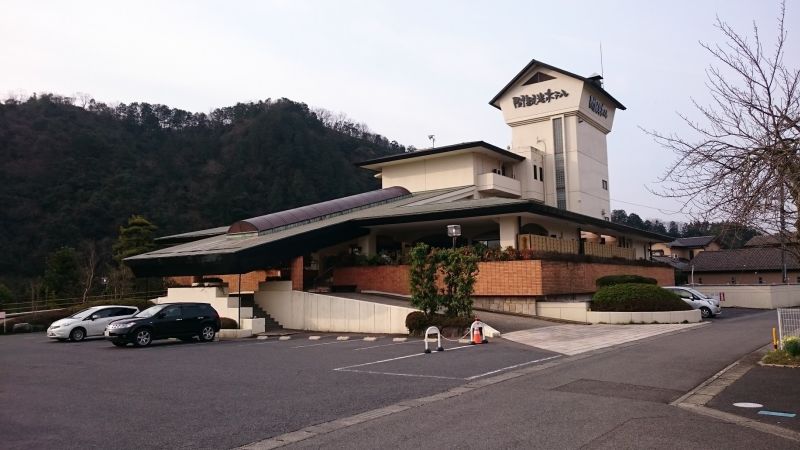
Traditional hotel in Seki...
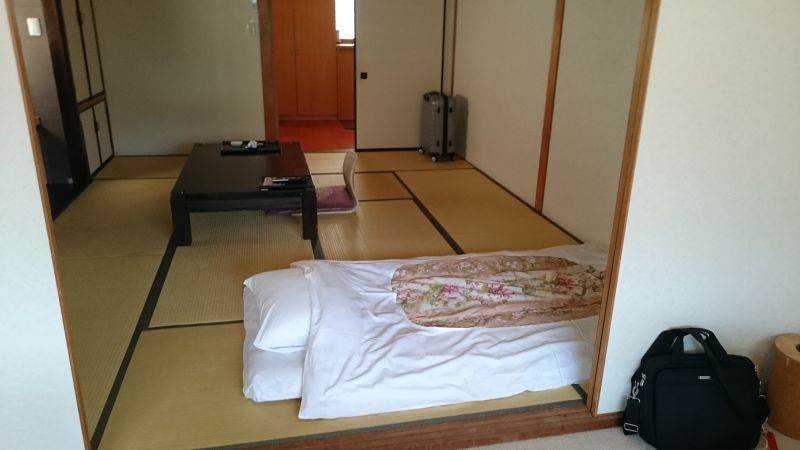
...even more traditional room...
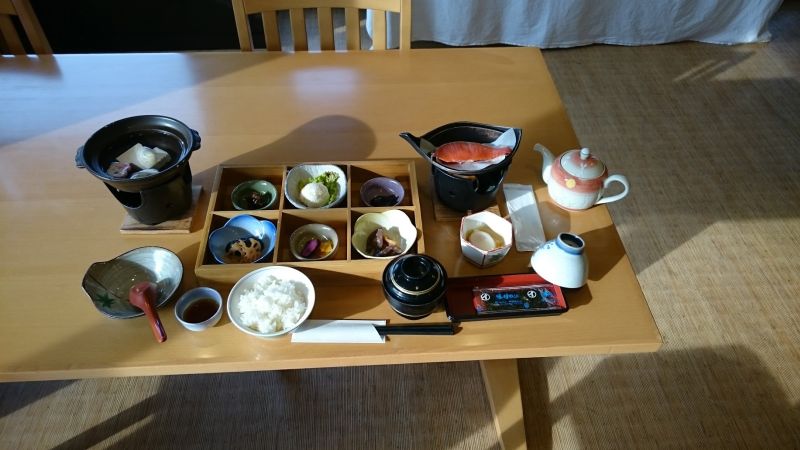
...Japanese breakfast
The golden point of my journey was scheduled for the next day. Katsumi tells me with undisguised but well-deserved pride: "You will experience what only few Japanese can do. I'm not even talking about strangers. You will never forget this day. ”I will say at the outset that he was absolutely right and not exaggerating at all. His friend and tutor Fujiwara Kanefusa represents the 25th generation of the swordsmith clan, which still forges the famous Japanese swords in the traditional way. To better understand the significance of this information, we try to assume that an average clan member fathered a child at the age of 25. If we multiply these numbers, we will be shocked to find that we have reached the 14th century! And that's where the jokes end. To whom honor, honor. I think in my mind how to show such respect to such a person. & Nbsp;
Master Fujiwara-san was waiting for us in his workshop, which is part of his house. Today he had to get up to catch his fire well. No gas, honest peat. Everything in the workshop, including the master, looks like from ancient times. At least you know you're in the right place. Before the master prepares, I look at the ingredients. Kera, tamahagane, nabegane, hochotetsu, semi-finished products ... I feel like I'm in a cabin full of teaching aids. It is clear from this that the master also has social "duties." The local association nominated him as a propagandist and protector of traditional crafts. It's hard to imagine a more suitable adept. & Nbsp;
Two helpers come on the scene. Kanefusa junior with a friend. We are looking at the 26th generation and the future seems to be taken care of. The master heats the fire with hand bellows and pulls out a glowing piece of steel. "That's real tamahagane," Katsumi whispers in my ear. At the masters' command, the helpers begin pounding with big hammers on the hot steel. The rhythm is determined by the master. Noise and sparks fill the workshop space. After a while, the master places an ax on the glowing prism and the helpers start hitting it. The master skillfully folds the steel and the whole process is repeated. Yes, this is infinity forging of the hagane of the Japanese sword. The result is first-class steel free of all unwanted impurities. Fujiwara-san suddenly points at me. I hesitate for a while, but the call to "participate" in the forging of tamahagane is strong. I take a heavy hammer in my hands and the master strikes his little one to the beat. He is constantly accelerating and watching the striking stranger. I have to persevere, I say to myself, and I find that at this pace, it's getting harder and harder to focus on accuracy. I do not give up despite the feeling that someone is brutally heating here. The Master appreciated my efforts and gradually reduced the frequency of strikes. My enthusiasm suppressed any fatigue, which the master acknowledged with his smile.
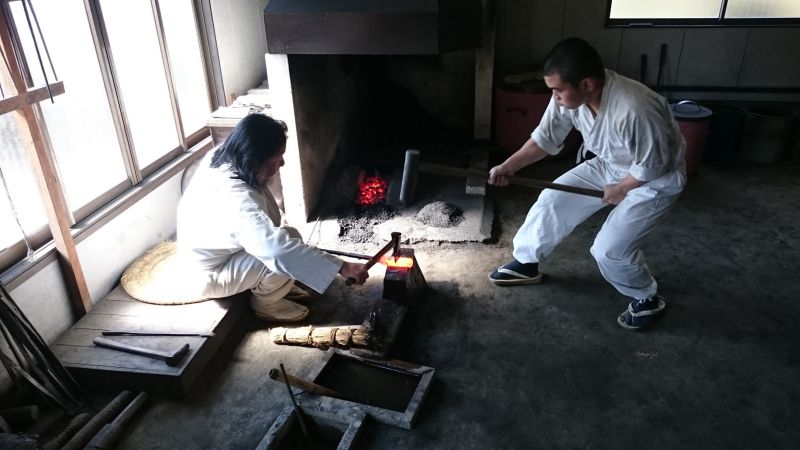
Master Kanefus Fujiwar at work & nbsp;
We moved from the blacksmith shop to the next room. There, the young apprentice patiently beats to produce stencils of dragons, which are engraved on the finished blades. Little did I know that the best was still ahead of us. We entered the master's study. Certificates, awards and letters of thanks hung on the walls. For example, from the American ambassador, the Russian ambassador and other important personalities. Fujiwara-san explained to me how to decorate a wooden case, what a tsubaya is and what a mekugi pin is for. I also learned how to apply ray skin to the sword handle. Somebody ringed, but the fairy tales were not the end, on the contrary, the beginning. After a while, the master brought into the room an elegantly dressed and very distinguished man. He apologized to us that he had to do something. Since the communication was in Japanese, Katsumi translated for me. It turned out that the master was working on one order, the katana sword. He finished the sword, but the client died in the meantime. The young man in the room is the son of the customer and came to pick up the goods. Fujiwara-san left briefly and brought a wooden crate. He opened it, carefully picked up a katana wrapped in fabric, and humbly handed it to the future owner. Sitting on the floor, he shot out his hands, silently took his sword, and motionlessly hypnotized it for long minutes. After a moment, he woke up and smiled apologetically. He realized he was not alone in the room. And then he did something unexpected. He shot out his hands and handed me that extremely rare weapon. Katsumi quickly whispered to me, "You must not touch the blade." A sword with 3,000 layers worth 20,000 euros got into my hand. It was a strange and hard-to-describe feeling.
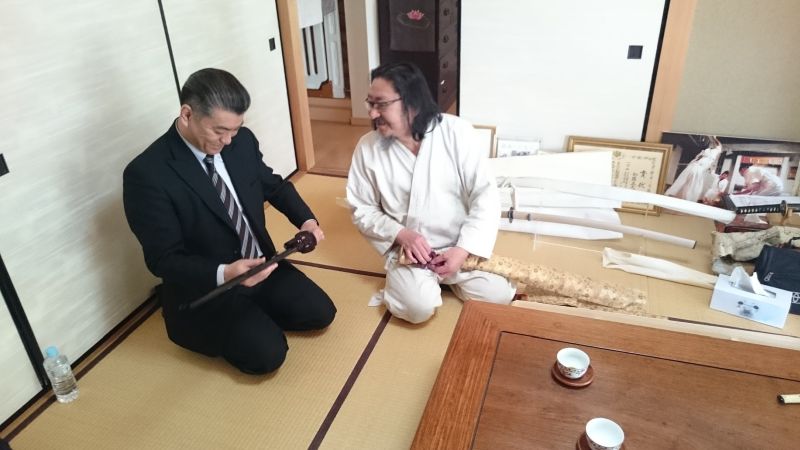
Passing on the katana
We spent the afternoon in Katsumi's kingdom. His Sumikama Cutlery is located in an industrial park in the Hidasa area. It consists of an office building and a production hall. The showroom is dimensioned really generously. Large negotiating tables confirm that the KASUMI brand is one of the most sought after. Katsumi Sumikama had some good arguments in choosing this name. A person with such a first name cannot reach for another. In addition, the mountains around Seki are often gently covered with fog, and it is the term kasumi that names this phenomenon. And thirdly, kasumi in the Japanese blacksmith craft means folding and forging two different materials. So in the case of the main Damascus Sumikama Cutlery program, we can talk about strike home.
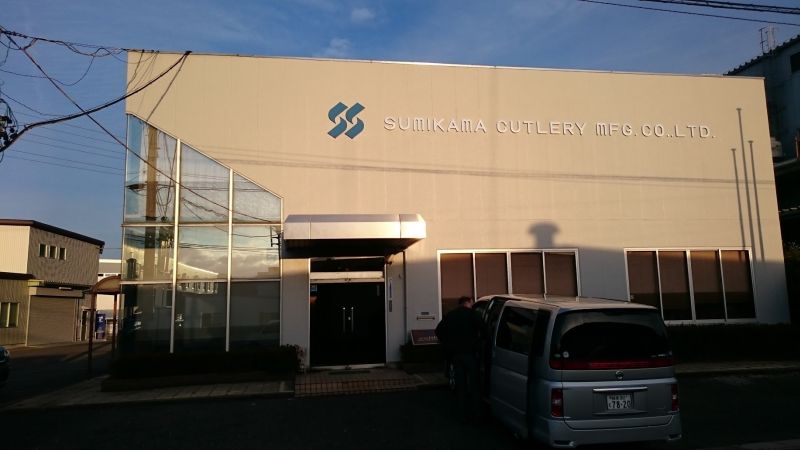
Sumikama Cutlery headquarters
We move from the administrative building to the dispatch center. Here, a nimble senior has an activity under his control. Katsumi introduces me to his father, the company's founder. He also has a grandson, so the future of the family business is secure. There is obviously a good organization in the production hall. The individual workplaces are logically connected to each other. I can't see the workers here and there. Everyone has a place where they patiently do their job. Almost complete production takes place here. Only a heavy press for the initial stamping of the blades is missing. This activity is provided by suppliers. The process therefore begins with milling. This is done by a modern machine, of which the owner is rightly proud. It is the only fully automated device in the whole hall. All other tasks are performed by experienced craftsmen on disc grinders, polishers, stones and with the help of column drills. The share of manual labor is enormous. It is exciting to watch the birth of knives that have become a symbol of the Damascene blade class.
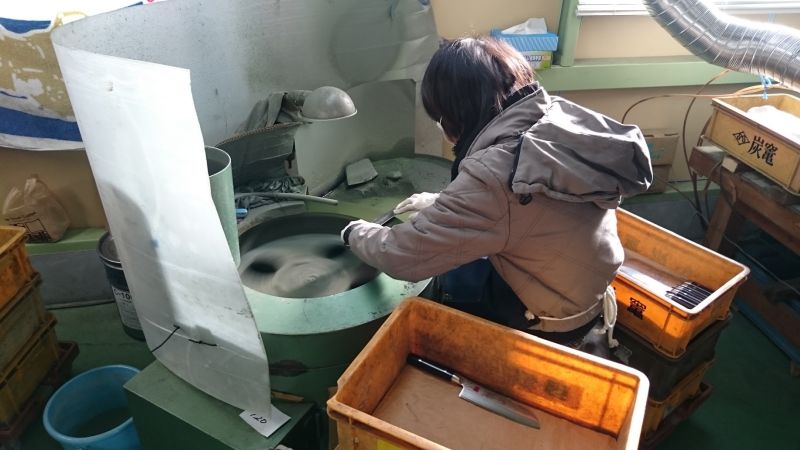
Sharpening of Kasumi Damascus
We ended this intense day full of experiences with a visit to the blacksmith museum. The exhibits of knives and swords alternated with audiovisual presentations. Every October, the museum becomes the center of the Seki Cutlery Festival. Local producers of kitchen, pocket and other knives and blades will set up their stalls in its surroundings and adjacent streets. Seki is rightly proud of the adjective - the city of blades.
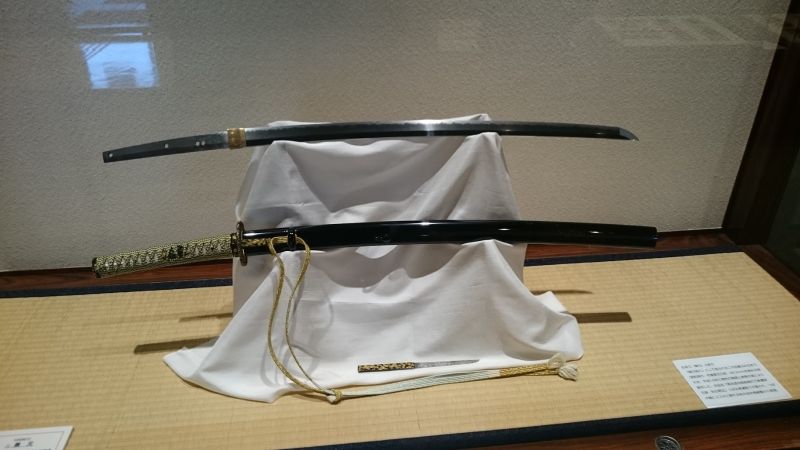
Exhibit of the local museum
©2010-2018 Copyright Roman Ulík, Nippon Knives, www.japonskenoze.sk, all rights reserved
Photographs and texts are protected by copyright and their use is not possible without the author's consent.


 Sign in
Sign in Registration
Registration



























